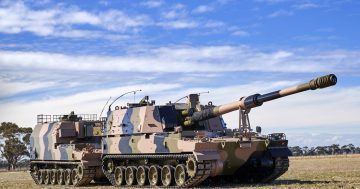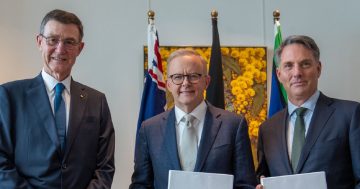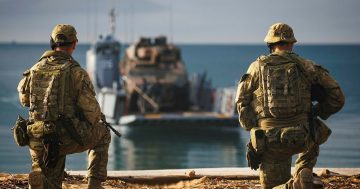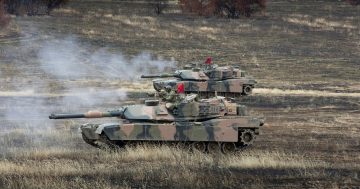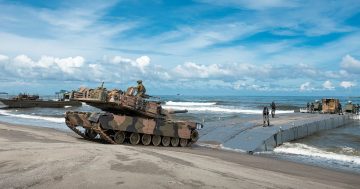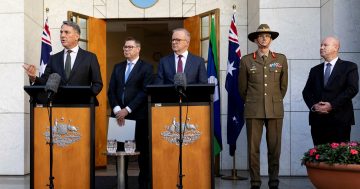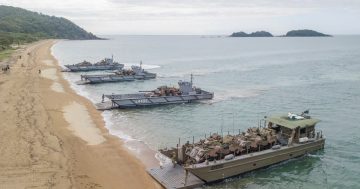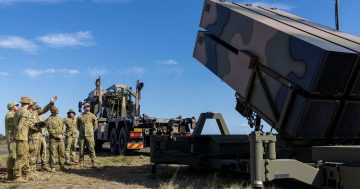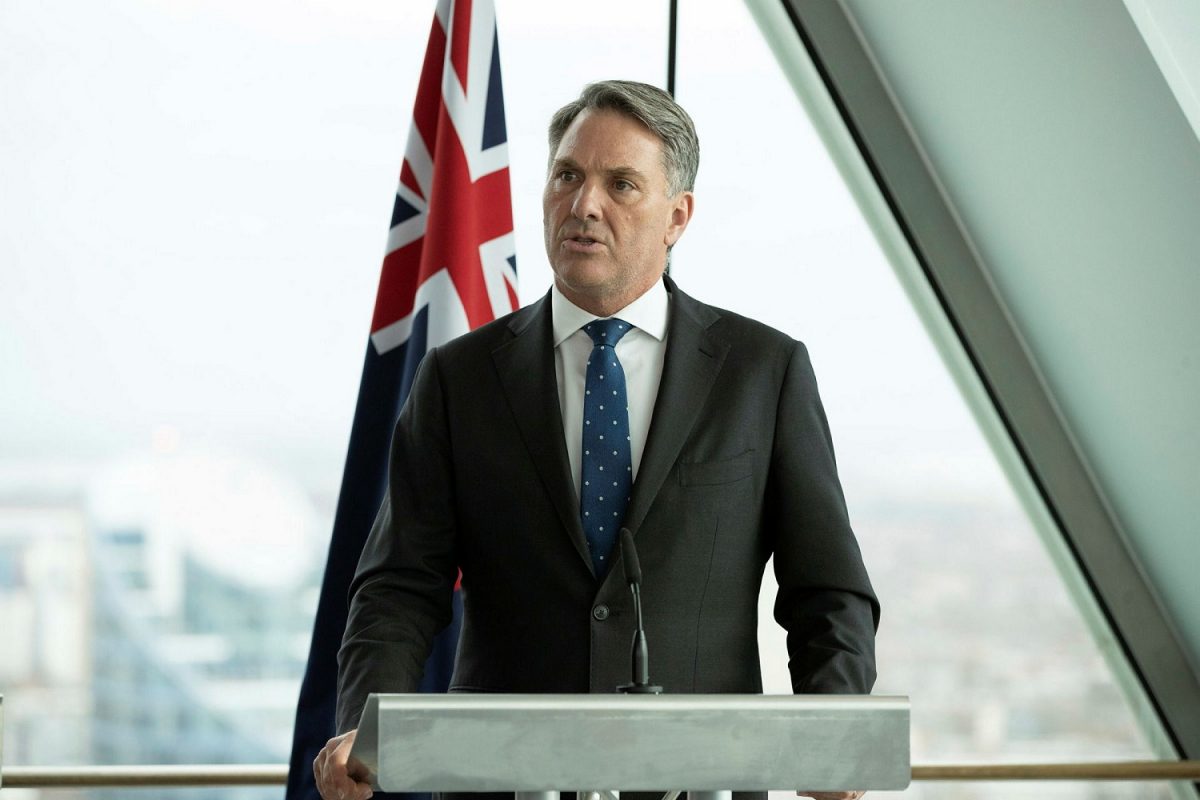
Defence Minister Richard Marles. Photo: ADF.
The Defence community is abuzz with reports the Albanese Government’s Defence Strategic Review (DSR) has been or will soon be delivered to the Government, and rumours abound about what the recommendations of the report are or will be.
Penned by former Defence Minister Stephen Smith and former Chief of Defence Force Air Chief Marshal (Ret’d) Sir Angus Houston, the DSR was initiated by the then-new Labor government in July 2022 to assess the previous government’s procurement plans and proposed force structure against current and projected geopolitical and capability threats in the Indo-Pacific region and beyond.
Most analysts and observers expect there to be few big surprises in the DSR in the form of project cancellations or new capabilities, with the more likely outcome being a massaging of overall program numbers and schedules.
In the land domain, one big-ticket item up for review is the Project LAND 400 Phase 3 Infantry Fighting Vehicles requirement. The current plan calls for 450 armoured vehicles to be acquired to replace the army’s Vietnam-era M113AS4 armoured personnel carriers at a cost of up to $27 billion. But it has been widely reported that these numbers will either be substantially reduced, or that the project may be subdivided into two tranches each of about 200 vehicles, with the second tranche to be considered and funded in future years.
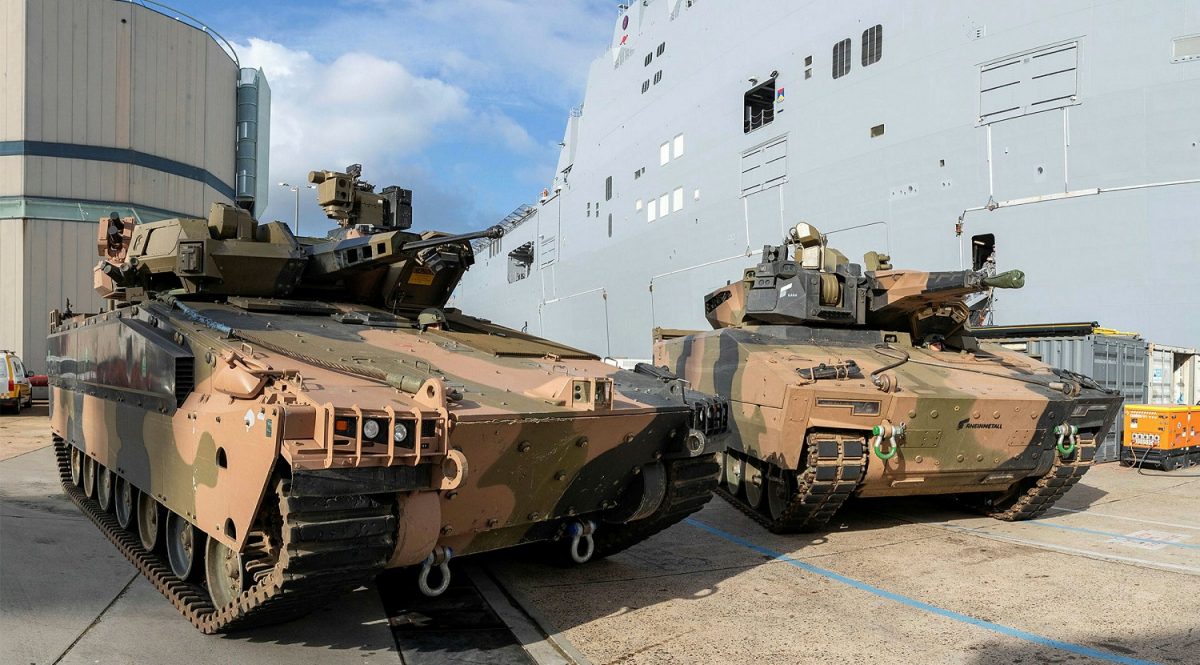
The Hanwha AS21 Redback (left) and Rheinmetall KF41 Lynx are competing for the LAND 400 Phase 3 Infantry Fighting Vehicle requirement. Photo: ADF.
With the 11th-hour May 2022 pre-election announcement by the former government that the Project LAND 4503 acquisition of 29 Boeing AH-64E Guardian Apache attack helicopters had been “finalised”, that project might, on face value, seem insulated from the DSR process. But the previous announcement was somewhat opaque as to whether a contract had been signed, and some analysts have suggested the Apache buy might be delayed and that the army’s 22 Tiger armed reconnaissance helicopters (ARH) the Apache was meant to replace could continue in service for up to a decade if required.
But it is possible another project may be accelerated to provide a new capability for the army. A low-risk Australian-developed proposal for the LAND 4100 Phase 2 Land-Based Anti-Ship Missile capability, dubbed Strikemaster, integrates the familiar Bushmaster armoured-vehicle chassis with a brace of KONGSBERG NSM anti-ship missiles, the same as those being acquired for the navy.
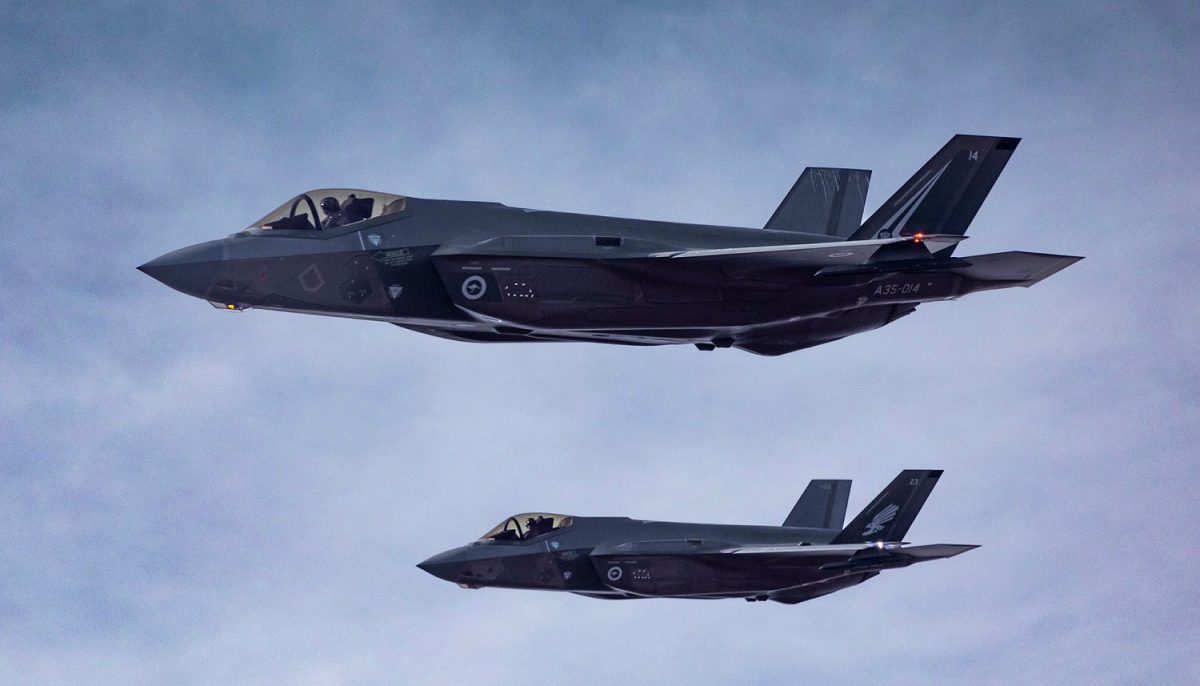
Two RAAF F-35A fighters. A decision will soon be made on whether to acquire 28 more F-35s. Photo: ADF.
The Royal Australian Air Force (RAAF) also has several key decisions pending, the main one being the AIR 6000 Phase 7 requirement for an additional 28 Lockheed Martin F-35A fighters to bring its total to 100, and whether to retain and upgrade its 24 Boeing F/A-18F Super Hornets. If the F-35A is acquired and the Super Hornet retained, this will in effect grow the RAAF’s air combat force by about 25 per cent.
Two unmanned projects are also under review – the AIR 7000 Phase 1B high-altitude maritime reconnaissance requirement and the DEF 6114 MQ-28A Ghost Bat ”loyal wingman” air combat capability.
The Boeing MQ-28A is the first combat aircraft designed in Australia since the 1950s, and despite little information being released by the RAAF in recent months, development of the aircraft appears to be progressing. Observers have noted that the configuration and autonomous systems of the Ghost Bat suggest it could be scaled up to a larger and longer-ranging airframe, so the potential capabilities it offers are highly promising.

The Australian-designed Boeing MQ-28A Ghost Bat has shown much promise in early testing. Photo: ADF.
The AIR 7000 Phase 1B requirement has progressed at a snail’s pace, largely due to US Navy budgetary and development delays with the Northrop Grumman MQ-4C Triton. With the US Navy taking the lead on the Triton’s introduction to service, the RAAF has slowed its own acquisition process while the US stabilises its budget and conducts operational testing of the system. So far, three Tritons are under contract for Australia out of a requirement for up to seven aircraft.
Other air-related projects due to mature in the next couple of years include the ambitious AIR 6500 Integrated Air and Missile Defence (IAMD) program, for which Lockheed Martin Australia and Northrop Grumman Australia have been shortlisted; the AIR 6502 medium-range ground-based air defence system, which is an add-on to AIR 6500; and the AIR 9102 sovereign satellite communication (SATCOM) program, which will see Australia gain its own military communications satellites. The decisions on AIR 6500 and AIR 9102 are believed to be imminent.
The DSR will also review several key navy projects. The SEA 5000 Hunter-class frigate build program, which aims to acquire nine large frigates based on the UK’s Type 26 Global Combat Ship design, has been delayed due to unique Australian configuration changes compared with the original design. Some experts have called for additional Hobart-class destroyers – of which the navy currently has three in service – to be built, but this doesn’t appear to offer any schedule or costs benefits, especially with the limited shipbuilding workforce in place at Osborne in Adelaide.
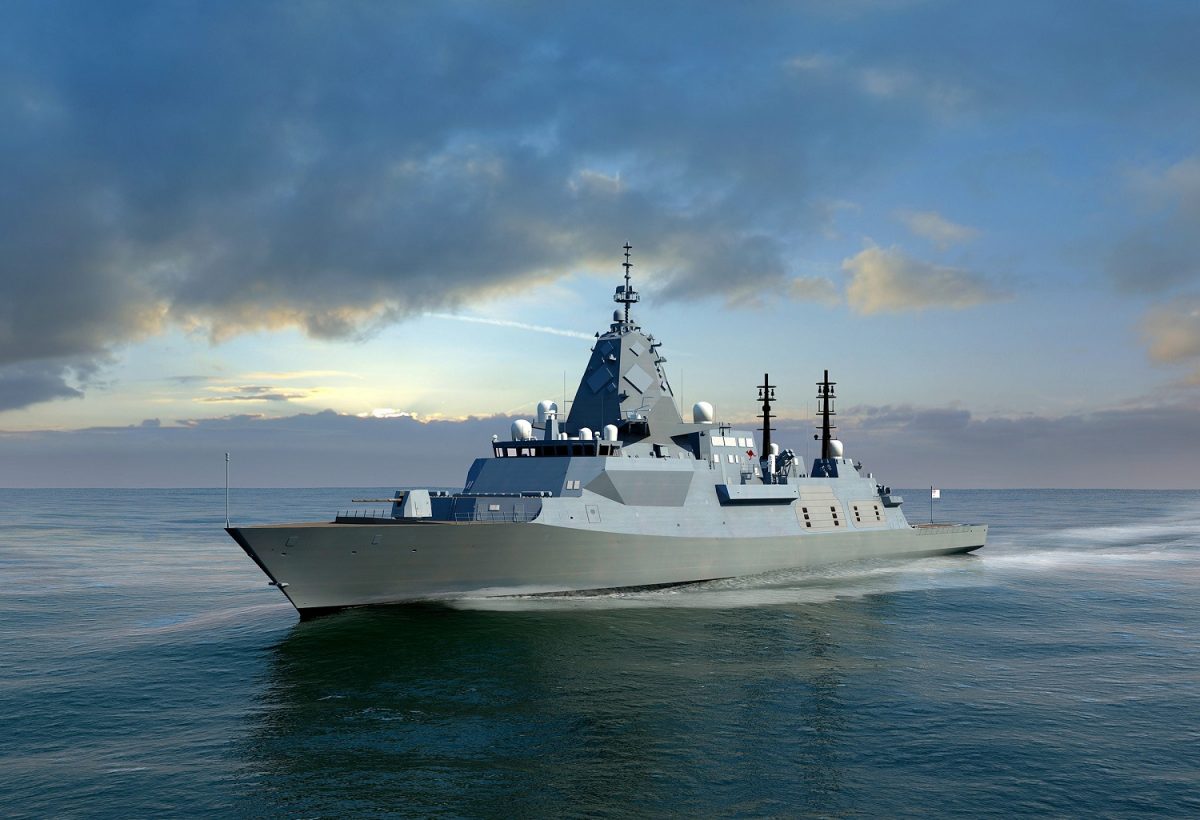
The nine-ship Hunter-class frigate build program has been delayed due to configuration changes. Image: BAE Systems Australia.
Delays have also been experienced on the SEA 1180 Offshore Patrol Vessel (OPV) program, which aims to deliver 12 vessels for border security and coastguard-like operations, so the navy has been forced to buy an interim class of vessels.
A decision is also due to be made on the SEA 5012 Tranche 1 & 2 Integrated Undersea Surveillance System (IUSS), which aims to acquire fixed, mobile and deployable acoustic arrays designed to detect adversary submarines operating in Australia’s maritime approaches, and to bring operational autonomous underwater vehicles (AUV) and support vessels into service.
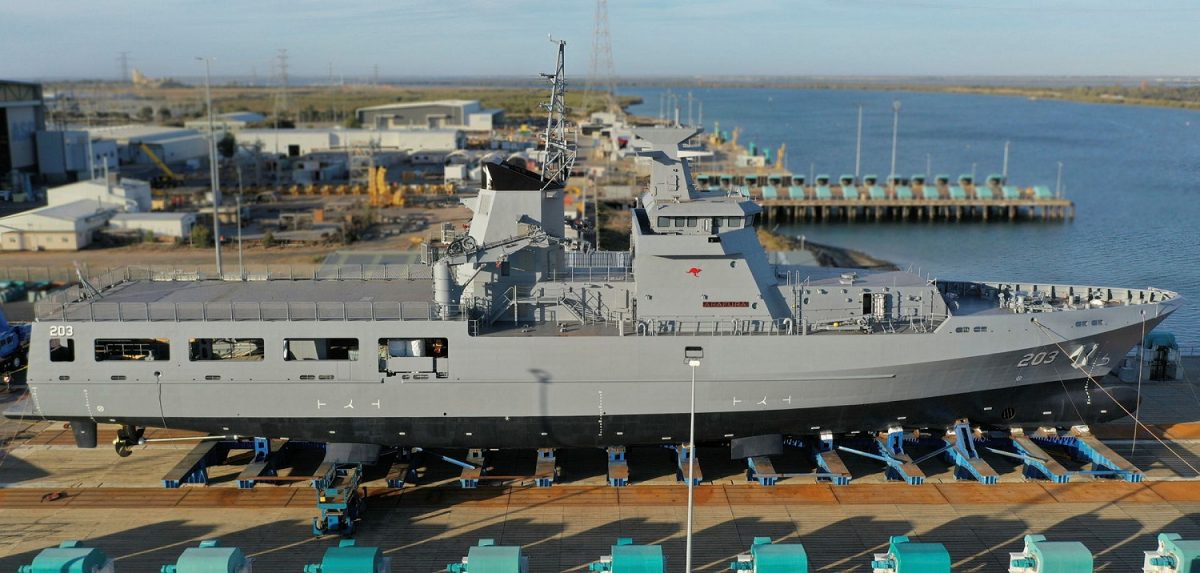
The first Arafura-class offshore patrol vessel just before its 2022 launch. Photo: ADF.
The analysis of how Australia will proceed with the acquisition of a nuclear-powered attack submarine (SSN) through the AUKUS construct is reportedly also imminent, but this has been conducted outside of the DSR process. The Commonwealth has several decisions to be made on how to proceed on the SSN, but separately, the DSR has likely considered whether to substantially upgrade the navy’s six 20-30-year-old Collins-class boats or buy an interim diesel-electric submarine (SSK) of a different design to cover a projected capability gap until the SSNs arrive around 2040.
Apart from the hardware, if most or all of these new capabilities are delivered, the ADF will require a substantial boost in manpower to operate and sustain them all. So it will be interesting to see how the DSR addresses the previous Morrison LNP government’s plan to increase the size of the ADF by about 30 per cent – from the current 61,000 to about 80,000 uniformed personnel – by 2040.
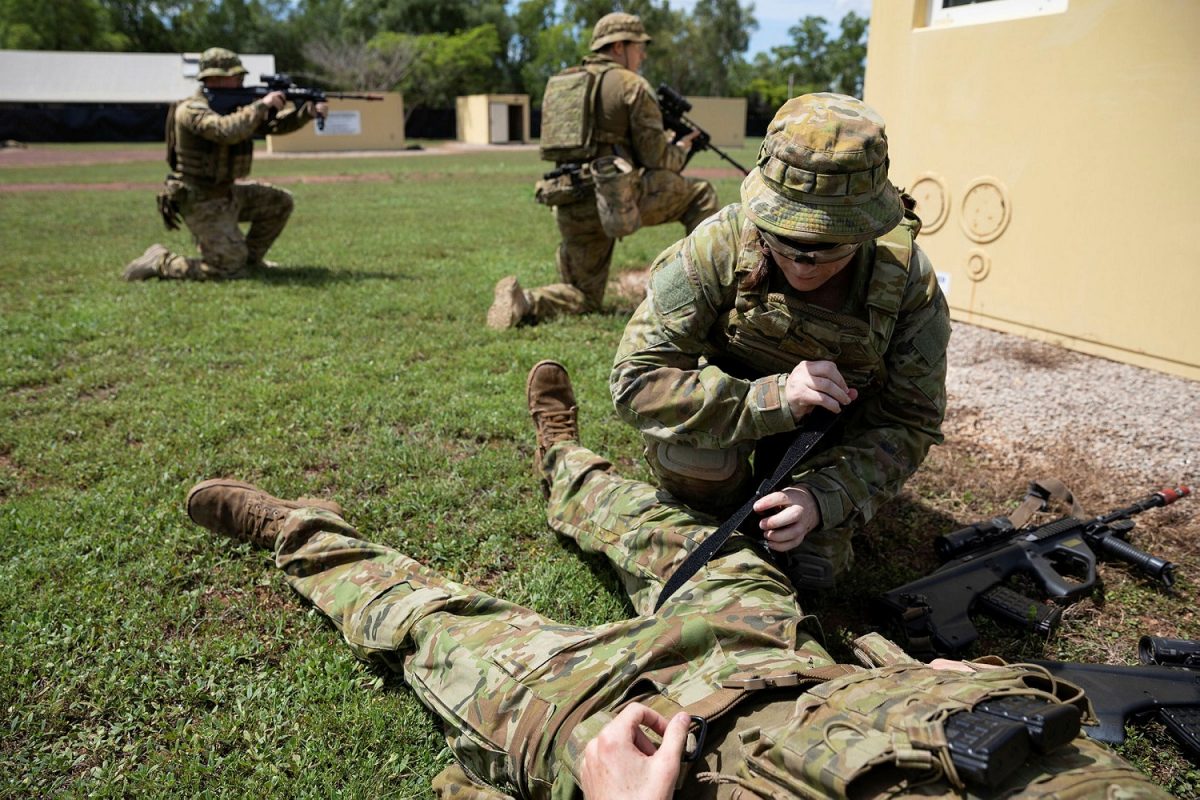
The capacity and throughput of ADF training systems will need to be addressed to meet the expected growth in personnel numbers. Photo: ADF.
There are valid arguments for this increase but, so far, little or no detail has been revealed on how to grow the ADF by such significant numbers. Certainly, the recruitment and training pipelines for all skill sets across all services will require a deep analysis and, in most cases, a dramatic increase in capacity and throughput to meet these growth targets.
Other issues that will hopefully be considered include an emphasis on acquiring a deeper magazine of ammunition stocks, increased sovereign fuel supply holdings and assurance, and base defence and resilience. And while the primary focus of the DSR is expected to be on capability acquisition projects, it is also hoped that the acquisition process managed by Defence’s Capability Acquisition and Sustainment Group (CASG) may also be subject to review to shorten the lead times.











